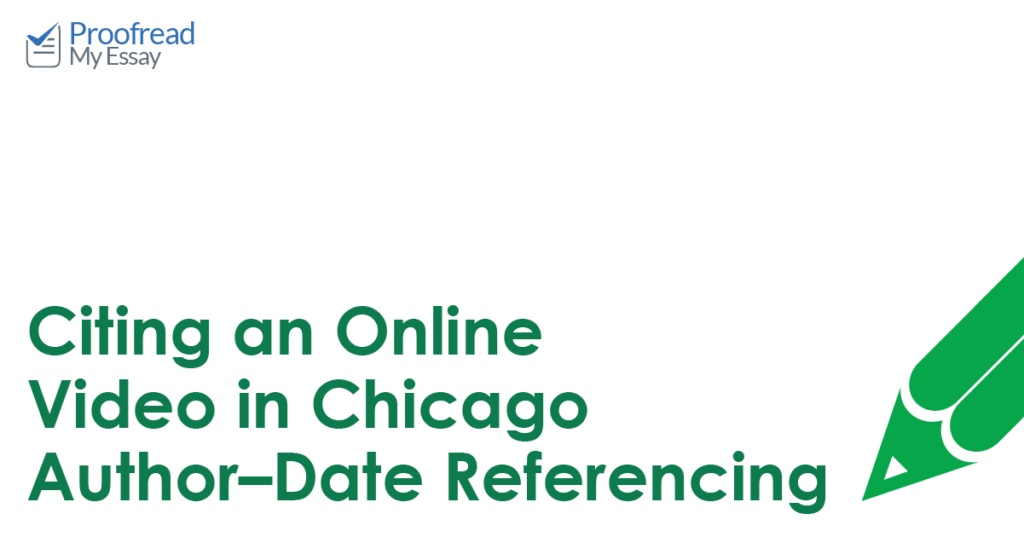How does citing an online video in an essay work? Previously, we have explained how to cite an online video using Chicago footnote referencing. In this post, though, we’re looking at Chicago author–date referencing. As such, check out our guide to find out how to format in-text citations and the reference list entry when citing an online video.
In-Text Citations for an Online Video
The basic citation format for citing an online video is the same as for any other source. This means that you need to give the surname of the video creator and a year of publication in brackets. For example, we would cite a video by Professor David Feldman from 2012 as follows:
The right of prisoners to vote is a controversial issue (Feldman 2012).
We’ve cited ‘Feldman’ as the video creator here because he is the person speaking in the video. In other cases, you may need to cite a writer, director, or another creator as appropriate.
The main difference between citing a video and a print source comes when quoting a source. This is because videos do not have page numbers, so you will need to provide a time stamp instead:
This was largely ignored in the nineteenth century, as most people did not consider denying prisoners the vote ‘philosophically problematic’ (Feldman 2012, 5:28).
Here, for example, the ‘5:28’ in the citation shows that the quote comes from 5 minutes and 28 seconds into the video. And as shown above, pinpoint citations should be given after a comma.
Find this useful?
Subscribe to our newsletter and get writing tips from our editors straight to your inbox.
Reference List Entry
As well as citing sources in the text, you’ll need to give full publication information for any video cited in a reference list at the end of your document. The format to use for this is as follows:
Surname, First Name. Year of publication. ‘Video title’. Host website. Format, video length. Uploader name (if different from creator). Date of access (if required). URL.
The key here is to provide enough information for the reader to find the video you have cited. The date of access is optional, but many universities will require one. This can be especially important for online content, as the uploader may delete the video or change it at some point. In practice, then, the reference list entry for an online video would look like this:
Feldman, David. 2012. ‘Votes for Prisoners? Democracy and the European Convention on Human Rights’. YouTube. Video, 18:43. Cambridge University. 29 November, 2018. https://www.youtube.com/watch?v=GuORTUCHoTw&list=PL2F80C043A4208C85&t=0s&index=21.
You can see above, for example, that as well as the video creator and title, we have cited the host website (YouTube) and the uploader (the Cambridge University YouTube channel). This will help readers to find the video even if the URL changes at any point in the future.
